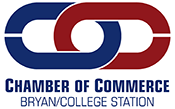Employer Paid Benefits: $0 for employee only coverage
Medical / Dental / Vision / STD / LTD / Life / AD & D
HealthPoint is bringing HOPE, HEALTH and HAPPINESS to our communities through
Positive Disruption, Unleashing Joy & Putting People First. To be the best place to work, practice medicine
and receive care....With an attitude of gratitude!
Click Here to see how we are shaping our culture with Orange Frog!
BASIC FUNCTION
Practice as a Pediatrician and provide clinical leadership to the pediatric medical team, setting standards for patient care and ensuring adherence to evidence-based practices.
PRIMARY RESPONSIBILITIES AND DUTIES
MEDICAL DIRECTOR
- Quality Assurance and Improvement
- Oversee the development and implementation of quality assurance programs for pediatric care, including regular audits and performance evaluations.
- Identify areas for improvement in clinical processes and outcomes, working collaboratively to implement corrective actions.
- Patient Care Coordination
- Lead efforts to enhance coordination and communication among pediatric healthcare providers within the health center.
b. Implement strategies to improve patient outcomes and satisfaction in pediatric services.
- Provider Education and Development
- Develop and facilitate ongoing education programs for pediatric medical staff, ensuring continuous professional development.
b. Mentor and guide pediatric providers, fostering a culture of learning and excellence.
- Policy Development and Compliance
- Stay abreast of industry trends, guidelines, and regulations related to pediatric care, and update policies accordingly.
b. Ensure compliance with all relevant regulatory requirements and accreditation standards.
- Interdisciplinary Collaboration
- Collaborate with other medical directors and healthcare leaders to promote seamless integration of pediatric services with other specialties.
b. Foster a collaborative environment that enhances patient-centered care across the health center.
- Community Engagement and Advocacy
- Represent the health center in community forums and engage in pediatric health promotion activities.
b. Advocate for pediatric healthcare needs, contributing to community outreach programs.
- Resource Management
- Optimize resource allocation within the pediatric department, including personnel, equipment, and facilities.
b. Identify opportunities for resource efficiency and cost-effectiveness.
- Emergency Response and Preparedness
- Develop and implement protocols for pediatric emergency response within the health center.
- Ensure staff readiness and training for pediatric emergencies.
PEDIATRICIAN:
- Provide comprehensive pediatric medical care
- Conduct thorough assessments of pediatric patients, including medical history, growth and development evaluation, and physical examinations
- Diagnose and treat common pediatric illnesses, injuries, and conditions, ensuring appropriate management and follow-up care
c. Monitor and promote healthy growth and development in children and adolescents
- Build and maintain relationships with pediatric patients and their families
- Establish a rapport with patients and their families, fostering a comfortable and trusting environment
- Communicate effectively with parents or guardians, addressing their concerns, explaining medical information, and providing guidance on pediatric health and wellness
c. Collaborate with the interdisciplinary healthcare team to ensure coordinated and family-centered care
- Perform and interpret diagnostic tests and procedures
- Order and interpret laboratory tests, radiological imaging, and other diagnostic procedures specific to pediatric patients
- Utilize clinical knowledge and expertise to provide accurate and timely diagnoses
- Collaborate with radiologists, pathologists, and other specialists as needed for consultation and interpretation of test results
- Develop and implement treatment plans
- Create individualized treatment plans for pediatric patients based on medical assessments, diagnoses, and evidence-based guidelines
- Prescribe medications, vaccinations, preventative screenings and recommend appropriate interventions or referrals for specialized care
c. Educate patients and families on treatment options, medication administration, potential side effects, and expected outcomes
- Maintain accurate and up-to-date medical records
- Document patient encounters, medical histories, examination findings, diagnoses, treatment plans, and progress notes in electronic health records (EHR)
- Ensure compliance with legal and regulatory requirements for pediatric medical recordkeeping, privacy, and confidentiality
- Regularly review and update medical records to reflect changes in patient conditions, treatment plans, and follow-up care
d. Timely completion and closure of charts as per organization policy
- Stay current with pediatric medical knowledge and best practices
- Engage in continuous professional development through participation in pediatric conferences, seminars, and medical literature review
- Stay updated with advancements in pediatric research, evidence-based practices, and clinical guidelines
c. Maintain board certification and necessary licensure, fulfilling continuing medical education (CME) requirements specific to pediatrics
- Collaborate with the healthcare team and community resources
- Work collaboratively with medical providers and other healthcare professionals to optimize patient care and outcomes
- Consult and refer patients to pediatric specialists when needed, coordinating and facilitating seamless transitions of care
c. Collaborate with community organizations, schools, and support networks to promote pediatric health education and preventive care initiatives
- Participate in quality improvement and patient safety initiatives
- Contribute to quality improvement programs aimed at enhancing pediatric patient safety, satisfaction, and outcomes
- Actively participate in pediatric clinical audits, case reviews, and morbidity and mortality conferences
c. Identify areas for improvement, implement evidence-based practices, and contribute to the development of pediatric care protocols and guidelines
17. Performs other duties as assigned
a. Effectively carries out task and responsibilities beyond core job duties and primary role. The additional duties may vary from time to time and encompass a wide range of activities that contribute to the overall success of the organization. (Floating, schedule variations, assisting co-workers, patients, visitors, customers, leaders, and other stakeholders in support of the organization.)


